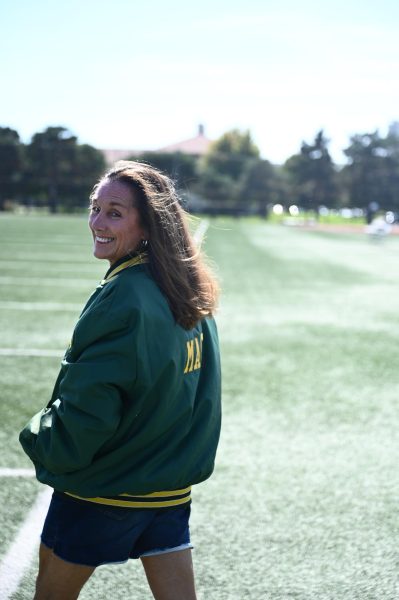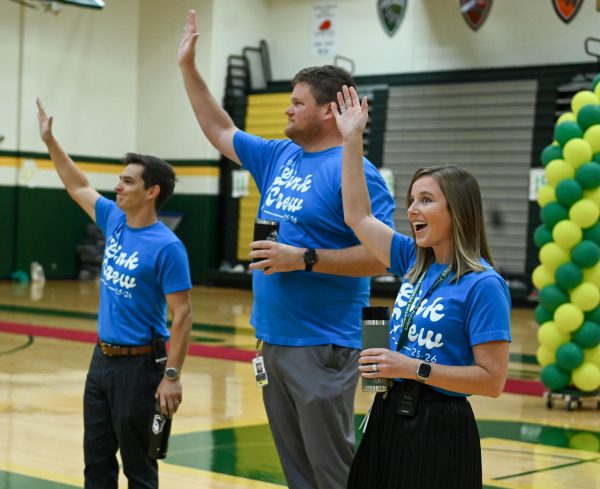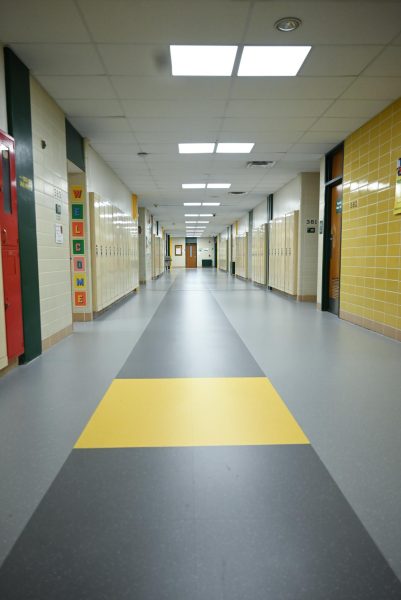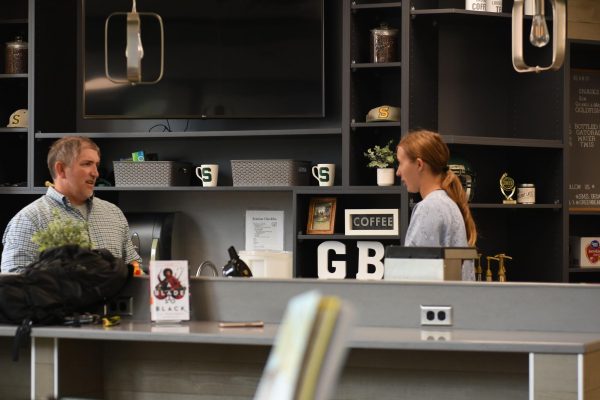A Family Affair
Although to some, adoption may be a laughing matter, to others, it is a reality. For most, as a child or even as a teenager, being adopted doesn’t dramatically change life. The child is brought up in much the same way as any other kid, with the exception of shared blood and their parents’ physical traits. While family members may croon over babies saying things like, “He has his mother’s eyes” or “She has her father’s smile,” most families of adopted children are simply thankful to have the opportunity to bring up a kid that may not have a decent environment to grow up in otherwise. This was the case with science teacher Jan Alderson.
Alderson first considered adoption while fostering a girl from Colombia, South America. Her aunt’s friend dealt with adoptions in South America and helped with the process of international adoption.
“It’s frustrating not to directly go somewhere. You have to deal with the harder process [of mailing] things [to South America],” Alderson explained about the complications of international adoption.
On top of the distance problem, Alderson had to deal with a language barrier, evaluations, paperwork and a country at war.
“We’d never been to Colombia, and at the time it was very dangerous,” Alderson said. “I was by myself with this family of my foster daughter, and we had to break through a guerrilla barrier. They were killing judges in courts and killing people, especially Americans. So I was very grateful to make it through there.”
English teacher Travis Gatewood also came to the decision to adopt internationally. Gatewood enjoyed traveling to Mexico and minored in Spanish, leading to his discovery of South American culture and Guatemala, where he adopted his children. The process was very similar to Alderson’s.
“The experience teaches you a lot about trust and faith that you have to put into people. It involves a great deal of intrusion in your life. We had to fill out a dossier of 25 documents including five background checks. It involves a great deal of money that you just blindly send to people overseas and hope that they’re doing what they’re supposed to be doing,” Gatewood said. “You do have to do your research because there are some situations… where you get people who desperately want to be parents and you get a country that is very impoverished. Guatemala is the second poorest country in the Western Hemisphere behind Haiti, so you get people there taking advantage of the system or trying to traffic children sometimes, so you have to pay attention to that and make sure that the situation is good.”
Despite some hesitations about finding a legitimate adoption agency, Gatewood says the adoption has been a blessing from the beginning.
Although international adoption can certainly be an obstacle, music teacher Dustin Cates faced a much different challenge within the U.S. border.
“[Our adoption] was really irregular in two ways. One way was [that] having a gay couple adopt is sort of not the norm in the legal system, even though it’s becoming more common. Then the other irregularity of it was that it happened so fast,” Cates said.
Cates and his partner only just began to discuss adoption when they were suddenly surprised with an opportunity. Cates’s partner, a pediatrician, was making rounds at a hospital when he struck up a conversation with a new mother who mentioned giving her child up for adoption. Five days later, Cates was a father.
“We scrambled to prepare for his arrival. Because my partner’s a pediatrician and he works in a practice pediatricians, all of the doctors found out that we were going to bring a new baby home and they brought over tons of stuff for us,” said Cates, who otherwise felt unprepared in means of baby essentials.
Adoption differs greatly depending on the circumstances. They can take five days or twelve months. They may include a court appearance for a same sex couple or a trip to South America. They can also have different policies when it comes to open adoption, or allowing the biological parents to have contact with the adopted child.
Both Alderson and Gatewood are open to allowing their children to explore their roots, although the whereabouts of their children’s biological parents are unknown.
“I don’t want them to feel any sort of regret or doubt or shame,” said Gatewood on allowing his daughters to find out more about their heritage. “I just want to be open and honest and give them what they need to deal with it how they want to deal, especially as they’re discovering their identity and being between two cultures. I’ll support them in whatever shape or form that I can.”
Gatewood also feels that it’s important to be very open about discussing adoption with his children. He, as well as Alderson and Cates, chose a straightforward option with their children to make sure their adoption would not come as any sort of shock. All three made an adoption “lifebook”, a book which tells the story of their children’s adoption in an easily understandable format. The lifebook usually includes photos of friends and family, discerning between the biological and adoptive sides.
Cates, however, has less of a challenge when it comes time to explain adoption to his son. Taking advantage of the proximity of his biological mother, Emmaus will grow up knowing who she is.
“His birth mom comes over to visit regularly and we want her to continue to do that. He’ll call her by her first name and know that she’s his birth mom. He won’t call her ‘mommy’ because I think that gets kind of confusing to him,” Cates said.
Having an open adoption eases the transition a child has to go through when they’re old enough to begin asking questions about where they come from. This can be a huge part of growing up as an adopted child, and every kid is almost guaranteed to feel somewhat insecure about his or her identity. The best an adoptive parent can hope for is confidence in the way their parents raised them and trust in the bond that developed, regardless of blood.
“When I hold my baby and when he cries in the middle of the night and I go get him, the thought that he isn’t my blood never even comes to mind. That’s my baby and I love him just as much as I would if he were biologically related to me,” Cates said.
Gatewood feels similarly. While his bond with his children is tight now, he fears in the future that his daughters may go through a phase in which they struggle with their heritage.
“Right now they’re six and five and they seem to understand everything. As they get older, like a lot of teenagers, they’re going to go through an identity thing with just being a teenager. This is going to be a part of that and that’s going to be a challenge when we get down the road,” Gatewood said.
Coming from a different country can be a huge obstacle to overcome, not just for the parent, but also for the children. Not only are they curious about the culture of their home country, but they’re physically different from their parents.
“I think often, especially in our kid’s case, they’re both Hispanic and they grew up in a non-Hispanic elementary school, so they would color themselves dark. I think they see themselves in many ways different because they know they look a little different from other kids,” Alderson explained about her kids growing up.
Alderson had a challenge with the school board, as well. At the time when she adopted, the school she taught at did not have any kind of leave for adopting parents. Usually, a mother would get a six week pregnancy leave. For Alderson, the rules had to be altered.
Adoption can be a long, extraneous process. There are waiting periods, country borders, and other obstacles to overcome. It can be an extremely emotional time, especially when parents have the opportunity at any time to change their minds on giving up their child. In the end, however, all of these teachers and parents found their reward.
“One of the most beautiful moments of the day is coming home to the girls saying ‘Dad’,” said Gatewood. “I love seeing the world through their eyes and experiencing that kind of joy and innocence of being a kid… It’s been a blessing since the beginning and I really enjoyed the opportunity to be a father to the two girls that i have.”





